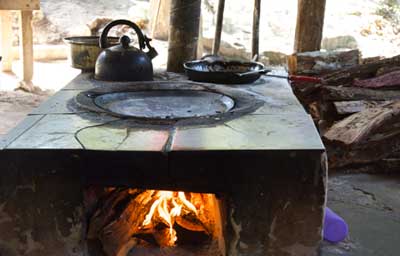Wildlife conservation areas dedicated to ranching: jaguar attack prevention

In the early 1990s, within the context of the emerging Mesoamerican Biological Corridor (CBM) initiative, Biocenosis proposed to consider the region known as Sierrita de Ticul as a priority site for the Yucatan state. The CBM was formalized in 1997, but the priorities were directed towards the coastal region seeking to consolidate a corridor between Ria Lagartos reserve, located east of the state, and Celestun on the western end of it. Those were the beginnings of a relationship between Biocenosis and forest corridors conservation in the Yucatan Peninsula. In those years, Biocenosis worked on the proposal, decree, consolidation and development of Kabah, El Palmar and Dzilam reserves, all in Yucatan; but the Sierrita de Ticul had to wait until 2011 to have legal protection when the Puuc Biocultural State Reserve was declared, also through the important role of this organization. Ranching in the Yucatan Peninsula is relatively new, dating back to about 60 years ago. However, this is enough time for some ranching management customs to be deeply rooted, making it more susceptible to jaguar attacks. As an example, during the day cowboys keep livestock in pens, and when night falls they release them to graze in the forest. These are the hours in which jaguars are most active.
The provision of equipment was complemented with small irrigation systems to promote the cultivation of cutting grasses, encouraging food production for the benefit of livestock and its owner. Thus several benefits are achieved, because on one side forage production is promoted while the pressure of livestock grazing in the undergrowth is reduced, which also allows the regeneration of forests in favor of the wildlife that lives there. Moreover, the probability of encounter between jaguars and cattle is decreased, and a barrier is created that limits the access of predators in the areas of custody. Seeking to have greater influence among ranchers of the area, they dug deeper into the various causes of cattle death; which made it evident that there are other causes that affect farmers on a greater extent but are less spectacular such as derrengue or paralytic rabies, caused by the bite of carrier vampires. For this reason, the project now also provides training workshops on livestock health management. Thus, in 2000 it began with four cattle ranches in Dzilam, while it was until 2002 when it was possible to show to the first rancher that the plan worked, and in that way he became an advocate among his peers. And so the project, initially funded by USF & WS, increased its influence zone annually adding two ranches each year until reaching eight. Then there was a lapse in which no support was achieved, but a new project funded by the CBM allowed to add nine more ranches, and later two others supported by SAGARPA. A total of about 18 to 20 farms are directly influenced by the project, and although progress continues, counting with new collaborations with organizations such as The Nature Conservancy and the Mexico REDD+ Alliance and diversifying the areas of influence, there is still enormous work to be developed in order to reconcile the legitimate interests of those engaged in ranching with those seeking the conservation of large carnivores and other wildlife species. One of the biggest challenges, at least in the northern portion of the peninsula, is to change the deeply rooted custom of taking cattle to graze at night. This is because of the agreements made with the owner of the ranch, but who really handles the cattle is the cowboy. We had an instructing case, Carlos Alcérreca says, director of Biocenosis: "in an adjoining ranch to the Celestún Reserve we had installed an electric fence and we helped implement pastures with an irrigation system included. All went well for months, but a weekend the cowboy could not stay at the ranch, and decided to do what he had always done: release the cattle to graze freely, just for once. That first night was enough, a jaguar attacked two calves". This testimony illustrates the importance of permanent training, creativity, perseverance and technical support in solving problems related to the multiple facets implied in efforts to conserve the biological environment. For cases of livestock predation by wild carnivores there is an insurance fund, perhaps unprecedented internationally, that economically compensates producers who are affected, and thus helps to stop the retaliatory reaction towards these carnivores.
|





















